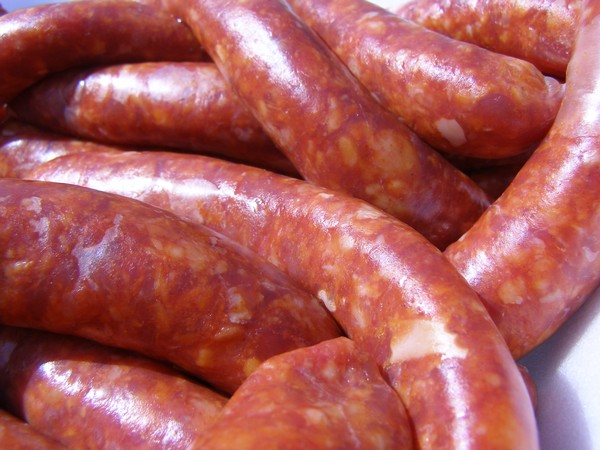Semi Dried Sujuk Sausage

Learn how to make your own mouth-watering sujuk sausage at home with this simple and easy-to-follow recipe that's packed with delicious spices and flavor.
Marthinus StrydomThe Story
Sujuk sausage, also known as sucuk, is a type of sausage that originated in the Balkans and the Middle East. Its history can be traced back to the Ottoman Empire, where it was a popular food item among the soldiers. The word "sujuk" is believed to have been derived from the Arabic word "sujukh," which means "dried." This refers to the fact that sujuk sausage is traditionally made by drying the meat in the sun.
The production of sujuk sausage has evolved over time. Originally, it was made using beef or lamb meat, mixed with various spices, such as cumin, garlic, and red pepper flakes. Today, pork is also commonly used in sujuk sausage production, along with other ingredients like paprika and coriander. The sausage is typically made by grinding the meat, mixing it with the spices and other ingredients, stuffing it into a casing, and then drying it.
Sujuk sausage has become a popular food item throughout the world, particularly in regions where there are large populations of people with Middle Eastern or Balkan heritage. It is commonly eaten for breakfast, served alongside eggs, bread, and cheese. It is also used in various dishes, such as stews and soups, and is a popular ingredient in many traditional Middle Eastern and Balkan recipes.

Subscripe to my Facebook page.
Subscripe to my Youtube channel.
© All recipes are copyright protected by TheCultureCook.com unless the recipe was adapated from another source. All recipes are uniquely crafted and adapted by TheCultureCook.com. Copyright of some or all of the text reside with the original author.
Ingredients
Method
Prepare your meat by removing any silver skin, sinew, and arteries, and cut it into small strips or cubes.
Place the meat in the freezer until it reaches a temperature of 32°F to 34°F (0°C to 1°C).
While the meat is chilling, prepare your seasonings and rehydrate your casings. If you're using a starter culture, rehydrate it at this point as well. Once your meat has chilled, grind it on a coarse plate.
Add your seasonings and starter culture to the meat and mix until it becomes very tacky. If you grab a small handful, it should stick to your hand when you hold your hand upside down.
Stuff the meat mixture into natural casings and tie the ends. Prick the sausages, apply mold culture, and then weigh them. It's a good idea to write down a target weight to know when they're ready. A 10% to 15% weight loss is a good target.
Ferment your salami by placing it in an environment with high humidity and a temperature between 75°F (24°C) and 85°F (29°C) for 18 to 24 hours. You can achieve high humidity by wrapping the salami in cling film. This locks in the moisture. An oven with the light on but the oven off is a good place to ferment. Keep in mind that every starter culture is different. These instructions are for the Flavor of Italy starter culture or Sauerkraut juice. The goal of fermentation is to reach a pH between 5.2 and 4.9.
(Optional) Press the salami under a heavy cutting board during fermentation. Once fermentation is complete, hang the salami in an area with 80% humidity and a temperature of 55°F (13°C) for 3 to 7 days, or until the target weight loss has been achieved. The longer you hang it, the drier it will become (personal preference).
After the salami has finished drying (lost 15% weight), it is ready to cook and enjoy. You can cook it in a smoker, but it is most commonly sliced and pan-fried. Eating it with eggs is a very traditional way of enjoying sujuk.
